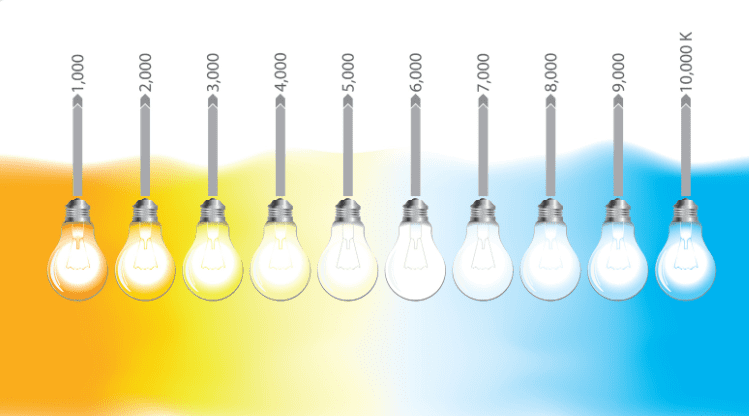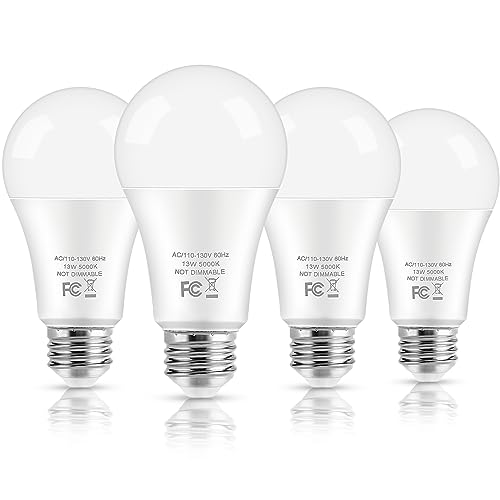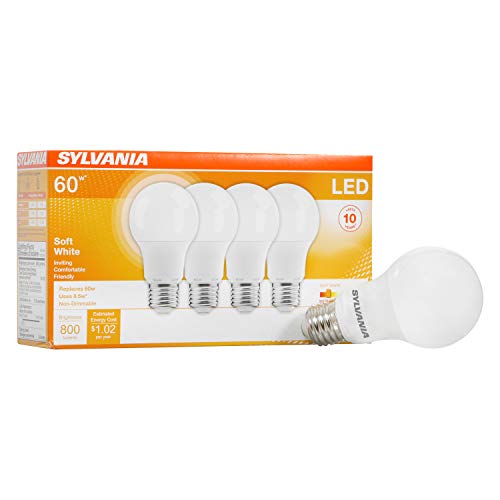
Soft White vs. Daylight Bulbs: Choosing the Right Light for Your Home
Light bulbs come in various colors, but two of the most common are soft white and daylight. These terms refer to the light’s color temperature, which affects a room’s mood and feel.
-
Soft white bulbs (2,700K-3,000K): Emit a warm, yellowish glow, ideal for creating a cozy and relaxing atmosphere. They’re perfect for living rooms, bedrooms, and anywhere you want to unwind.
-
Daylight bulbs (5,000K-6,500K): A bright, crisp light mimics natural daylight. Great for tasks requiring good vision, like kitchens, home offices, and bathrooms.
Picture yourself curled up with a good book on a rainy afternoon. Is the light washing over the page soft and inviting, or is it so stark you feel ready to fill out tax forms? The right lightbulb dramatically impacts how well you see and how the whole room makes you think.
That’s why understanding color temperature is a hidden superpower of interior design. Let’s dive into the world of soft white vs. daylight bulbs and discover how to achieve that perfect glow in every space!
Understanding Color Temperature

Think of color temperature as the personality of your light. It’s not about how hot the bulb physically gets but the color of the light it casts. We measure this in Kelvin’s (K). Here’s the basic breakdown:
- Lower Kelvins: Warm, yellowish light (think firelight or the old-school incandescent bulbs)
- Mid-Range Kelvins: Neutral, white light
- Higher Kelvins: Cool, white to bluish light (like a clear, sunny day)
Soft White: The Embodiment of Cozy
Soft white bulbs usually fall in the 2,700K to 3,000K range, radiating a warm, yellow glow. They’re the champions of creating inviting spaces and have a certain psychological effect – that warm light makes us feel safe and relaxed.
Where Soft White Shines
- Living Rooms: Perfect for setting a relaxing mood for movie night or friendly catch-ups.
- Bedrooms: This creates the ideal ambiance to wind down for a restful night’s sleep.
- Earthy Palettes & Natural Textures: Emphasizes rich wood tones and the warmth of cozy textiles.
Daylight: The Productivity Powerhouse
Daylight bulbs pack a punch, ranging from 5,000K to 6,500K. They offer bright, almost bluish light that mimics natural daylight. This crisp light is fantastic for tasks where you need to see detail.
Putting Daylight to Work
- Kitchens: Provides clarity for chopping veggies and cooking up a storm.
- Offices & Workspaces: Promotes focus and alertness for getting stuff done.
- Reading Nooks: Use a daylight bulb in a task lamp near your comfy chair for focused reading.
- Cool Color Schemes & Modern Design: Complements crisp whites, grays, and sleek fixtures.
Choosing the Right Bulb for Your Space
The magic is often not just about choosing one bulb type for your home. Consider both what you’re doing in a room and the mood you desire:
- Bathrooms: Think layers! Soft white for general ambiance, plus a daylight bulb above the mirror for makeup or detailed tasks.
- Dining Rooms: Soft white creates a flattering glow over dinner, while a statement fixture can add decorative flair.
- Basements: Often lacking natural light, these spaces benefit from the brightness of daylight bulbs.
Beyond Color Temperature
While color temperature is critical, here’s a quick note on other factors to consider:
- Lumens: Measure a bulb’s brightness.
- Intelligent Bulbs: This allows you to adjust color temperature and brightness for ultimate flexibility.
The Impact on Mood

Warm light relaxes us, while cool light boosts energy and alertness. Some studies suggest it even influences sleep patterns! Paying attention to lighting can be part of your self-care routine.
The Color Temperature Spectrum
We’ve focused on the two extremes, but there’s a middle ground! “Cool white” bulbs (around 4000K) offer a brighter white light than soft white but still have a touch of warmth for versatility.
Using Lighting to Influence Room Size
A design trick: soft white can make smaller spaces feel more expansive, while daylight can help prevent a large room from feeling too cavernous.
Troubleshooting Common Lighting Mistakes
- Mismatched Bulbs: Using different color temperatures in the same fixture creates an uneven look.
- Harsh Overhead Lighting: Opt for layered lighting (overhead, floor lamps, etc.) and dimmers for more ambiance.
- One Light Source: Rooms become more functional and interesting with a mixture of light sources.
Energy Efficiency and Bulb Types
- Traditional Incandescent: Warm light, but energy-inefficient.
- LED: More efficient, available in all color temperatures.
- Smart Bulbs: Ultimate customization, often controlled with your phone.
FAQ: Soft White vs. Daylight Bulbs
Can you use daylight bulbs in a living room?
While daylight bulbs can be used in a living room, they’re often too bright and harsh for a space meant for relaxation. Soft white bulbs are typically a better choice for a cozy ambiance. However, you might consider a daylight bulb near a reading chair or work area within the living room.
Is soft white or daylight better for hallways?
It depends on your preference and the hallway’s function. Soft white creates a warmer feel, while daylight offers better visibility for a functional space.
What light bulb is closest to natural sunlight?
Daylight bulbs (5000K-6500K) most closely mimic the color of natural sunlight.
Do I want soft white or daylight bulbs? Which is better?
There’s no single “better” option. Consider the room’s purpose:
- Soft white: Relaxation, cozy spaces (living rooms, bedrooms)
- Daylight: Tasks requiring focus, clarity (kitchens, offices)
Is soft white or daylight brighter?
Brightness depends on the bulb’s lumens, not just color temperature. However, daylight bulbs often appear brighter due to their blueish hue.
Are soft white or daylight bulbs better for your eyes?
Neither is inherently bad for your eyes. Choose the color temperature that helps you see best and creates the desired ambiance.
Should I get soft white or daylight LED bulbs?
LED bulbs are energy-efficient in both color temperatures. Apply the same room-by-room guidelines mentioned above.
What’s the difference between daylight, bright white, cool white, and warm white bulbs?
It’s all about color temperature (measured in Kelvins):
- Warm white: (2700K-3000K) Yellowish, cozy
- Cool white: (3500K-4100K) Whiter, less yellow
- Bright white or Daylight: (5000K-6500K) Crisp, mimics natural sunlight
Do different color temperature bulbs have other uses?
A: Yes! Soft/warm for relaxation, daylight/cool for tasks & focus.
Additional, More Specific Questions
- LED vs. sunlight color: Sunlight has a wider color spectrum, LEDs are close but not identical.
- Clear vs. frosted bulbs: Frosted diffuses light, clear is more direct.
- Full spectrum vs. regular LEDs: Full spectrum is designed to be closer to sunlight.
- Cool white vs. warm white: Cool is bluer, warm is more yellow.
- Why “soft white” and not “soft yellow”? Marketing! The term sounds more appealing.
- Light sensitivity: Consult an eye doctor if light strongly affects your eyes.
- Warm white vs. natural light: Natural light is less yellow than most warm white bulbs.
- GE Reveal vs. GE Relax: Reveal emphasizes color vibrancy, Relax is softer.
- LED vs. traditional bulb savings: LEDs use significantly less energy for the same brightness.
Conclusion
Choosing between soft white and daylight light bulbs might feel like a minor decision, but the impact on your home is undeniable. Color temperature profoundly shapes the ambiance of a room, from the cozy glow of a living room to the focused energy of a home office. Think beyond just light bulbs – smart light bulbs offer flexibility, letting you adjust from a warm light for relaxation to daylight for tasks.
When selecting the perfect light, consider your décor. Warm light complements inviting spaces like bedrooms and living rooms. Daylight bulbs harmonize with cool color palettes and crisp spaces like kitchens or modern dining room. It’s about how the bulb color interacts with everything else to create your desired effect.
Don’t be afraid to experiment! Just swapping out bulbs is a form of affordable home improvement. And remember, sometimes the perfect solution is a mix of soft and daylight within a single space. Understanding color temperature allows you to master lighting, tailoring every room to suit your needs and style perfectly.
The difference between soft white and daylight bulbs may seem subtle, but it profoundly impacts how your space looks and feels. Remember:
- Soft White = Relaxation & Warmth
- Daylight = Focus & Clarity
Experiment a little – it’s your home, so your preferences matter most! By understanding color temperature and how it interacts with your décor, you’ll transform your home into a haven of well-lit comfort and productivity.
Sources: Energy Star – https://www.energystar.gov/products/light_bulbs/color-and-mood
NASA – Light, Color, and Their Uses – https://www.nasa.gov/wp-content/uploads/2009/07/350524main_optics_light_color_and_their_uses.pdf
Last update on 2024-07-26 / Affiliate links / Images from Amazon Product Advertising API





























